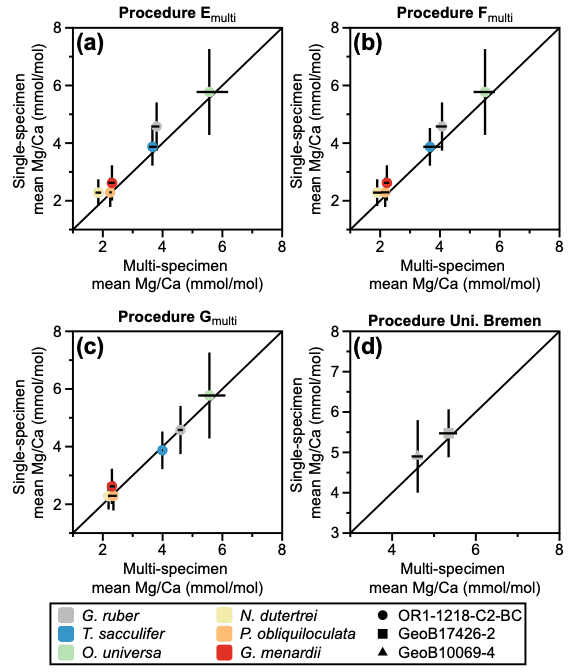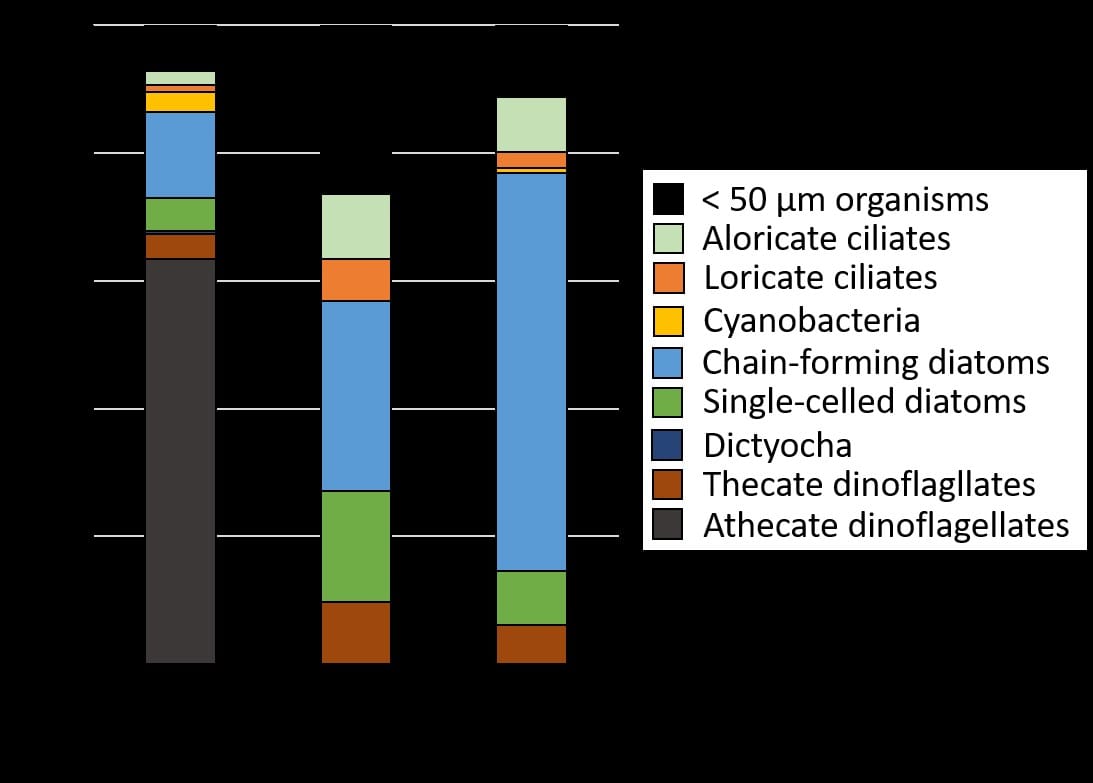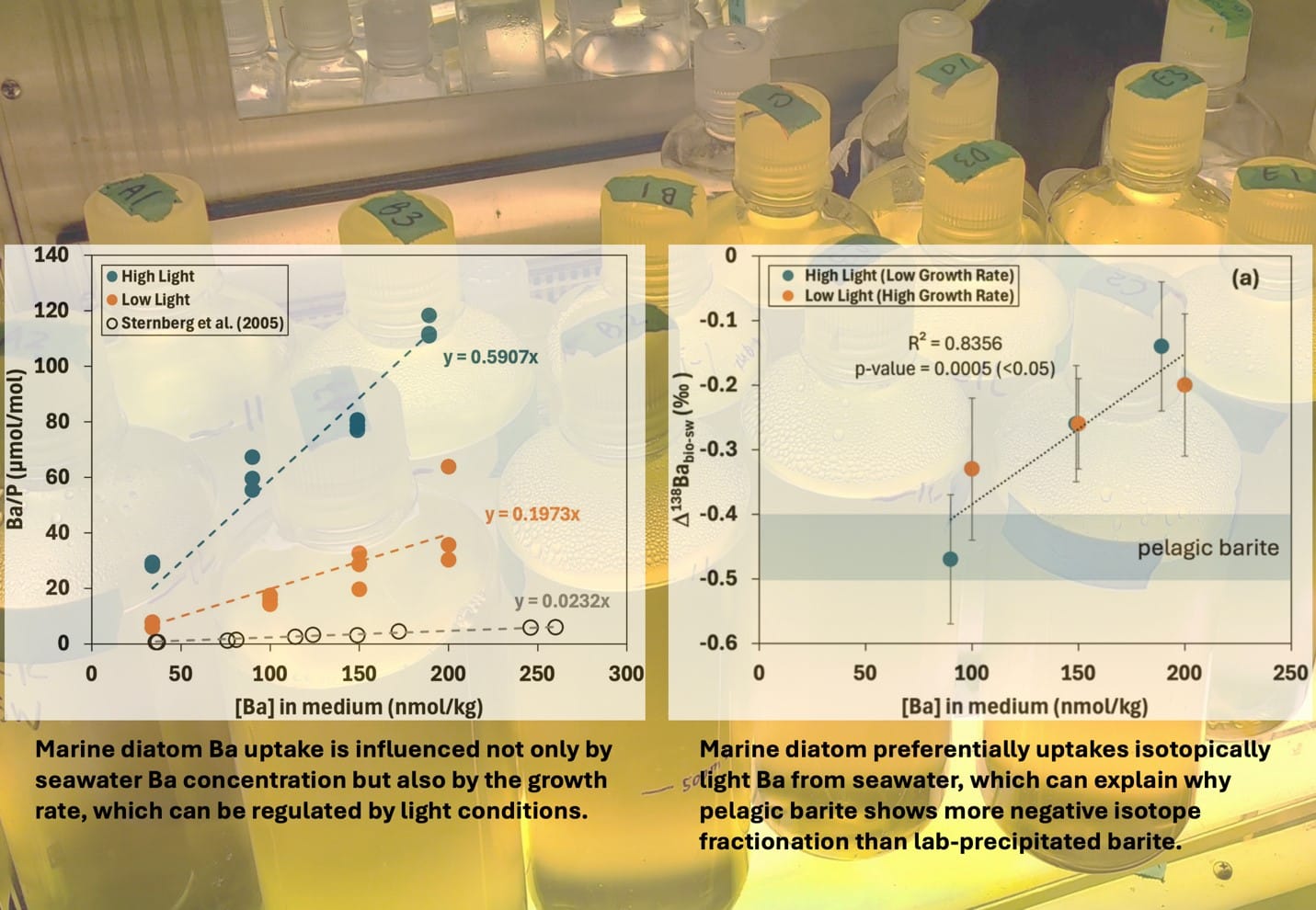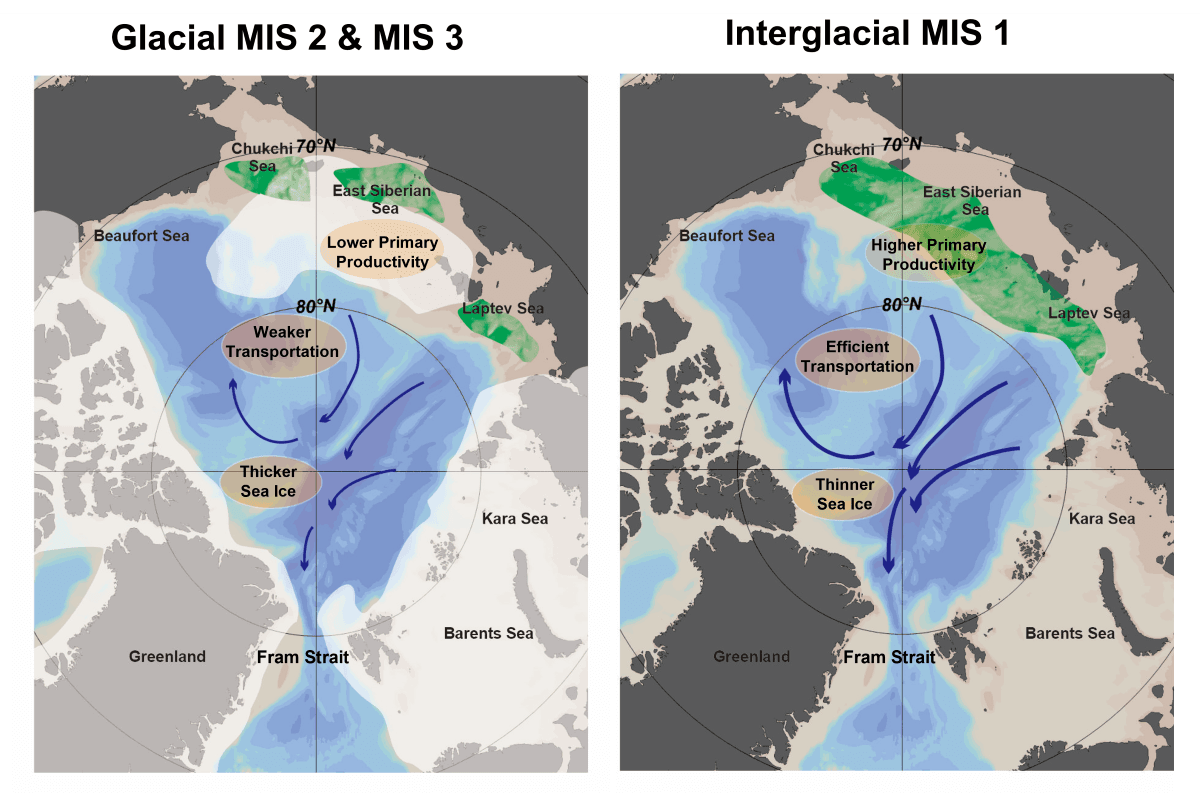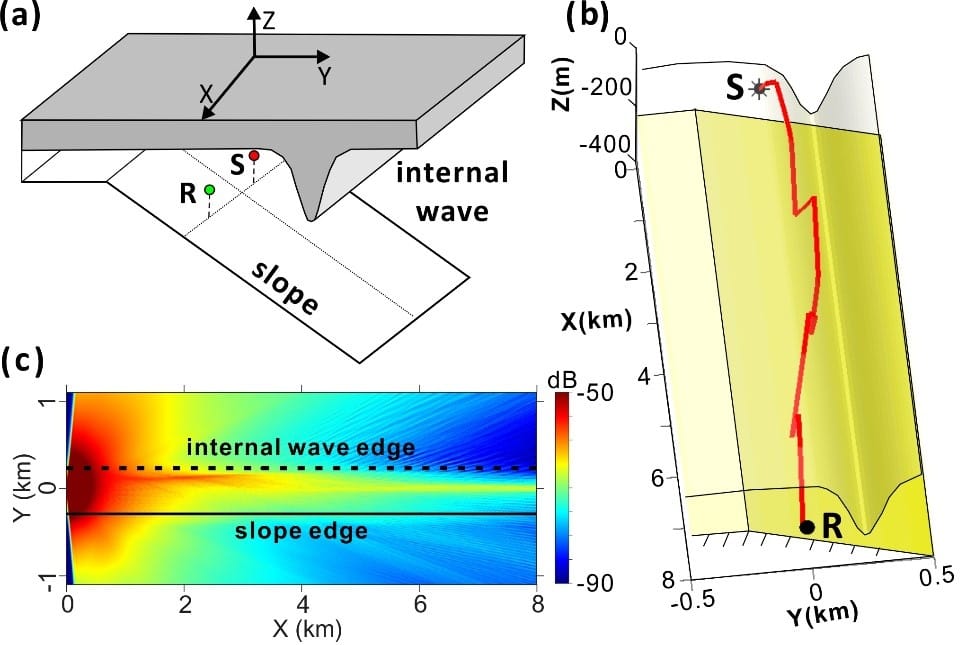Pei-Chi Ho, Pei-Ling Wang
The spatio-temporal variation of particulate organic matter (POM) in the euphotic zone at the shelf of the East China Sea (ECS) is affected by hydrological interactions and biological activities. An international research team, lead by Pei-Chi Ho, Ph. D. and Prof. Pei-Ling Wang, used the stable carbon and nitrogen isotope values and C:N ratio of POM in the euphotic zone of the ECS from 2008 to 2018 to infer their resources and investigated the main hydrographical and biological conditions that determined these spatio-temporal variations through synoptic and intensive seasonal monitoring. This study is a cooperation of researchers in NTU, NTOU, and Kobe University and has been published in Progress in Oceanography in August 2021.
The isotopic signatures and C:N ratios of euphotic POM varied within the range of values reported for marine phytoplankton (Figure 1), suggesting limited contribution of terrigenous POM to the shelf of the ECS. The δ13C values of POM increased with the increase of chlorophyll-a (chl-a) concentration at the depth of chl-a maximum and the δ15N values decreased near the Changjiang River plume and inner shelf with freshwater input and coastal upwelling in summer. This indicated that phytoplankton production was enhanced by high nutrient supply and warmer temperature. Besides, the δ15N values were higher under lower inorganic nitrogen nutrient concentrations, and were negatively correlated with POM C:N ratio (i.e., δ15N value was less negative with higher nitrogen content in POM). Such correlations may suggest the enhanced trophic interactions in microbial food chains in oligotrophic environments, where phagotrophic protists with high d15N values could increase in the size fraction of POM. The spatial and temporal δ13C and δ15N isoscape of euphotic POM serves as an ecological indicator to infer primary production and plankton food web properties of the East China Sea.
Figure 1. δ13C, δ15N values and molar C:N ratio of euphotic POM in the East China Sea in summer (July, 2017).
Figure 2. Linear regressions between δ13C value and maximal chl-a concentration (a), δ15N value and surface N nutrient concentration (b), and δ15N value and molar C:N ratio of POM (c). The synoptic data of the East China Sea in 2017 summer are indicated by red points and data from southern East China Sea are indicated by blue-green points. Solid lines indicate linear regressions with p < 0.05.
Reference: Ho, P.-C., Okuda, N., Yeh, C.-F., Wang, P.-L., Gong, G.-C. and Hsieh, C.-h. (2021) Carbon and nitrogen isoscape of particulate organic matter in the East China Sea. Progress in Oceanography, 197, 102667 (https://doi.org/10.1016/j.pocean.2021.102667).



